
Business ideas become more powerful when realized with a professional mobile application. We help you build an app from basic platform to advanced features, integrating payment, maps, AI or IoT depending on your needs. Mobile applications are not only a business tool but also a direct bridge between brands and customers, helping to increase long-term value.
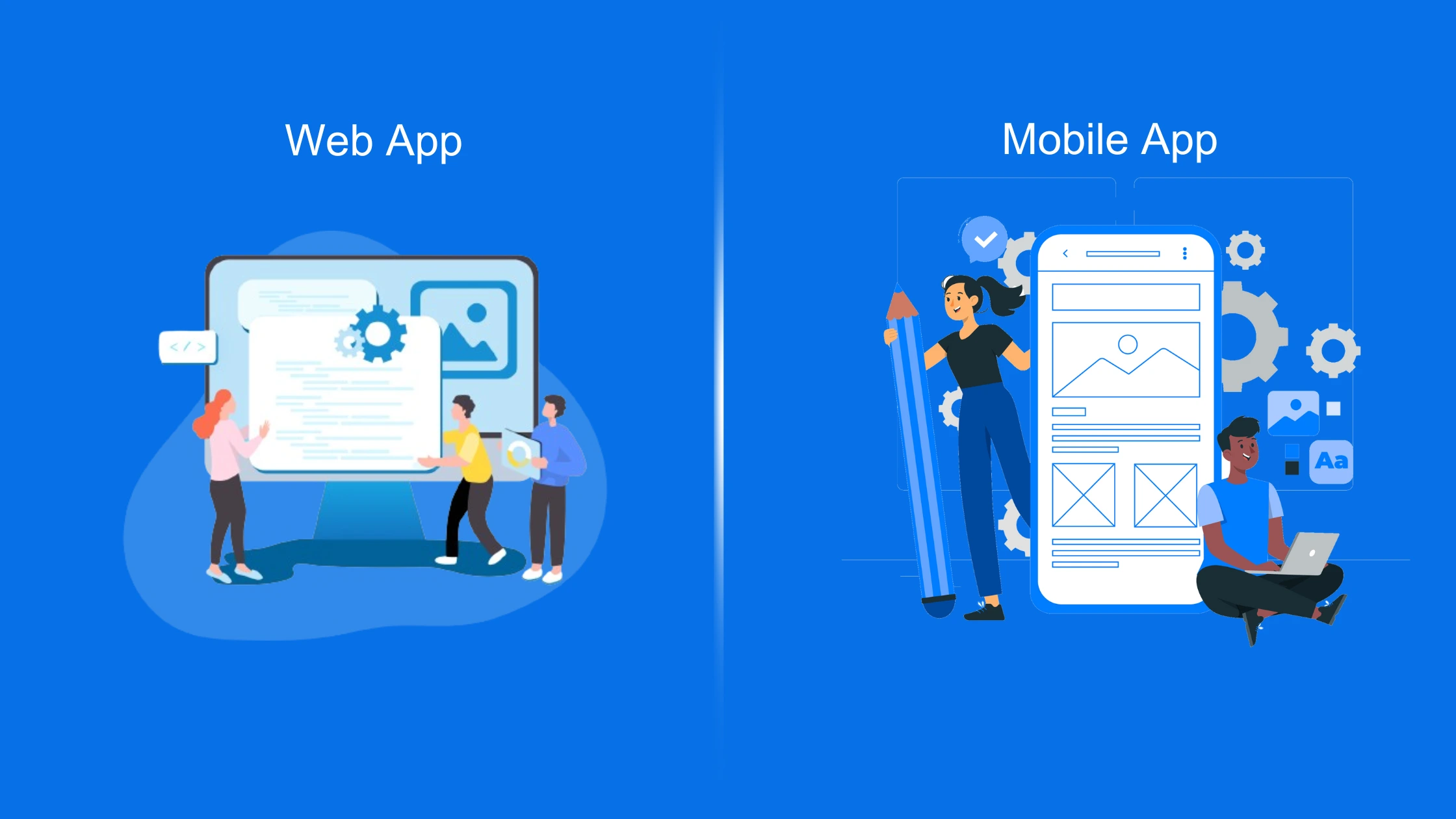
Don't let your ideas stay on paper. Contact us now to get advice from our experienced engineers and build an application demo in just a few days. You will see the potential for business growth when you own a professional mobile application, optimized for both iOS and Android.

Mobile application programming helps businesses own apps running on Android, iOS, supporting management, sales, customer care and brand development. This is an indispensable tool in the mobile era.
Mobile applications provide a convenient experience, reaching users anytime, anywhere. Businesses can improve business efficiency, maintain loyal customers and expand the market thanks to their own apps.

Mobile users are increasing, mobile applications are becoming an effective connection and sales channel.
Mobile programming helps businesses reach customers quickly, build a professional brand image and provide personalized services according to user needs.
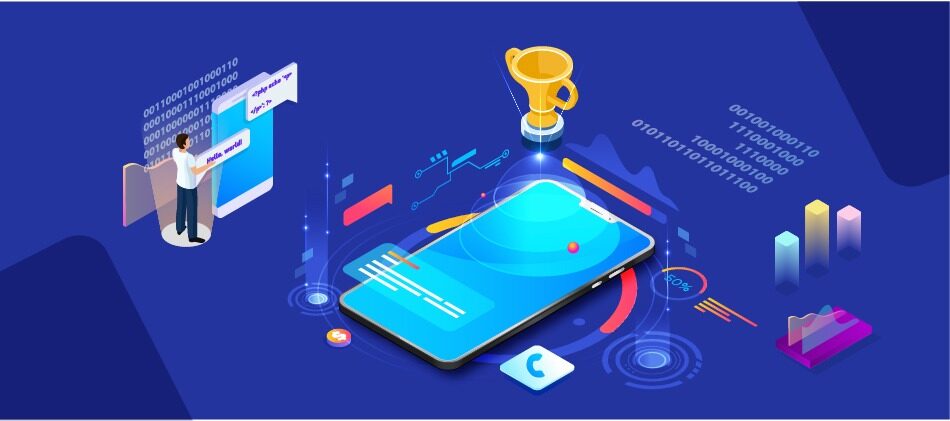
From e-commerce, education, healthcare, gaming to enterprise applications – Mobile programming meets all needs.
Every industry has its own characteristics and Mobile applications are the tools to optimize processes, enhance user experience and grow sustainable revenue.

Mobile apps are developed in many languages like Java, Kotlin, Swift, Python or cross-platform frameworks like Flutter, React Native.
Using modern technology helps the application optimize performance, good security, and easy upgrade. This is a solid foundation for long-term business development.
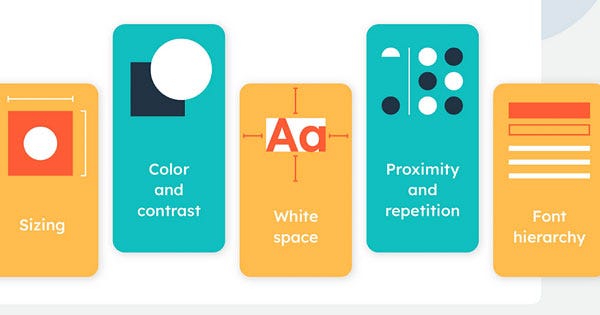
React Native allows cross-platform application development at optimal cost, saving time while maintaining good performance.
With a large community and rich libraries, React Native helps businesses quickly own high-quality apps that are easy to maintain and update.
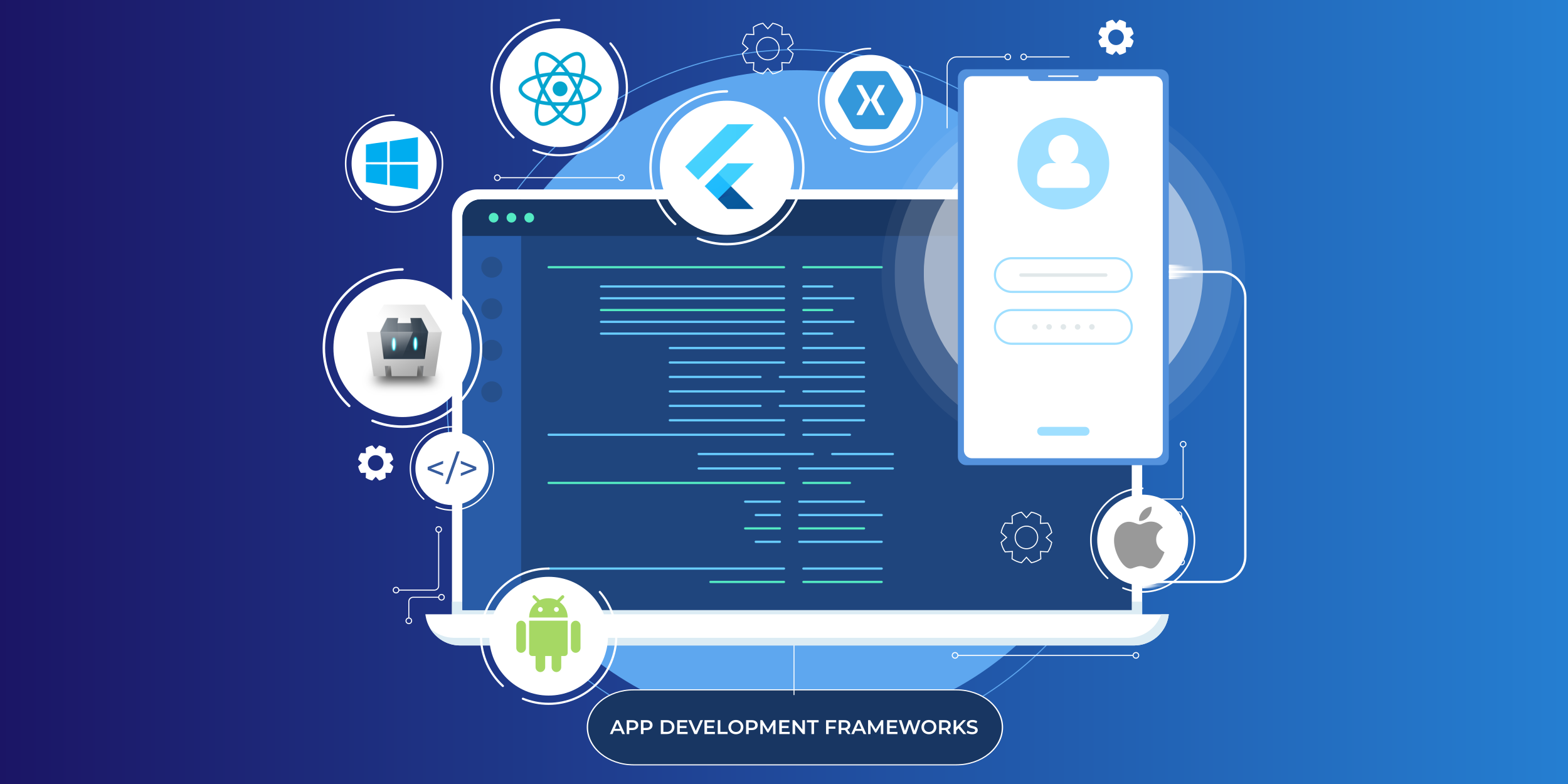
Flutter is a powerful framework developed by Google, featuring beautiful interface and outstanding performance.
Apps written in Flutter have a smooth, unified experience across both Android and iOS, making them ideal for startups and businesses looking to accelerate.
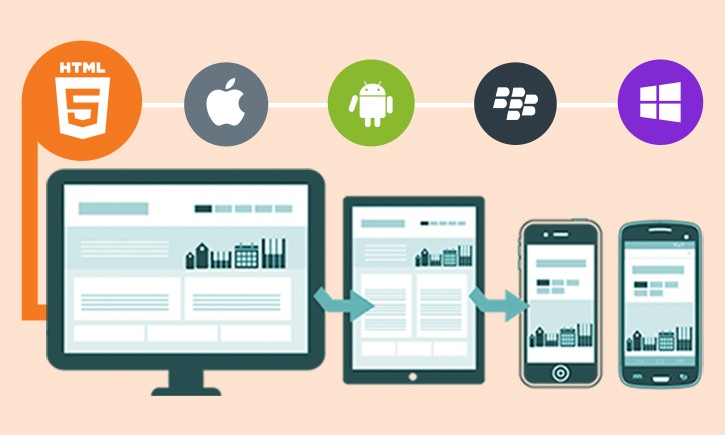
Although Python is not popular for Mobile, it supports well in building learning applications, data processing, and artificial intelligence.
With the combination of AI, Python makes Mobile applications smarter, increases the ability to suggest, automate and bring different experiences to users.
The mobile game industry is growing strongly, accounting for a large proportion of the global mobile application market.
Game programming requires creativity, cutting-edge technology, and engaging experiences. It’s a lucrative field for monetizing and building entertainment brands.
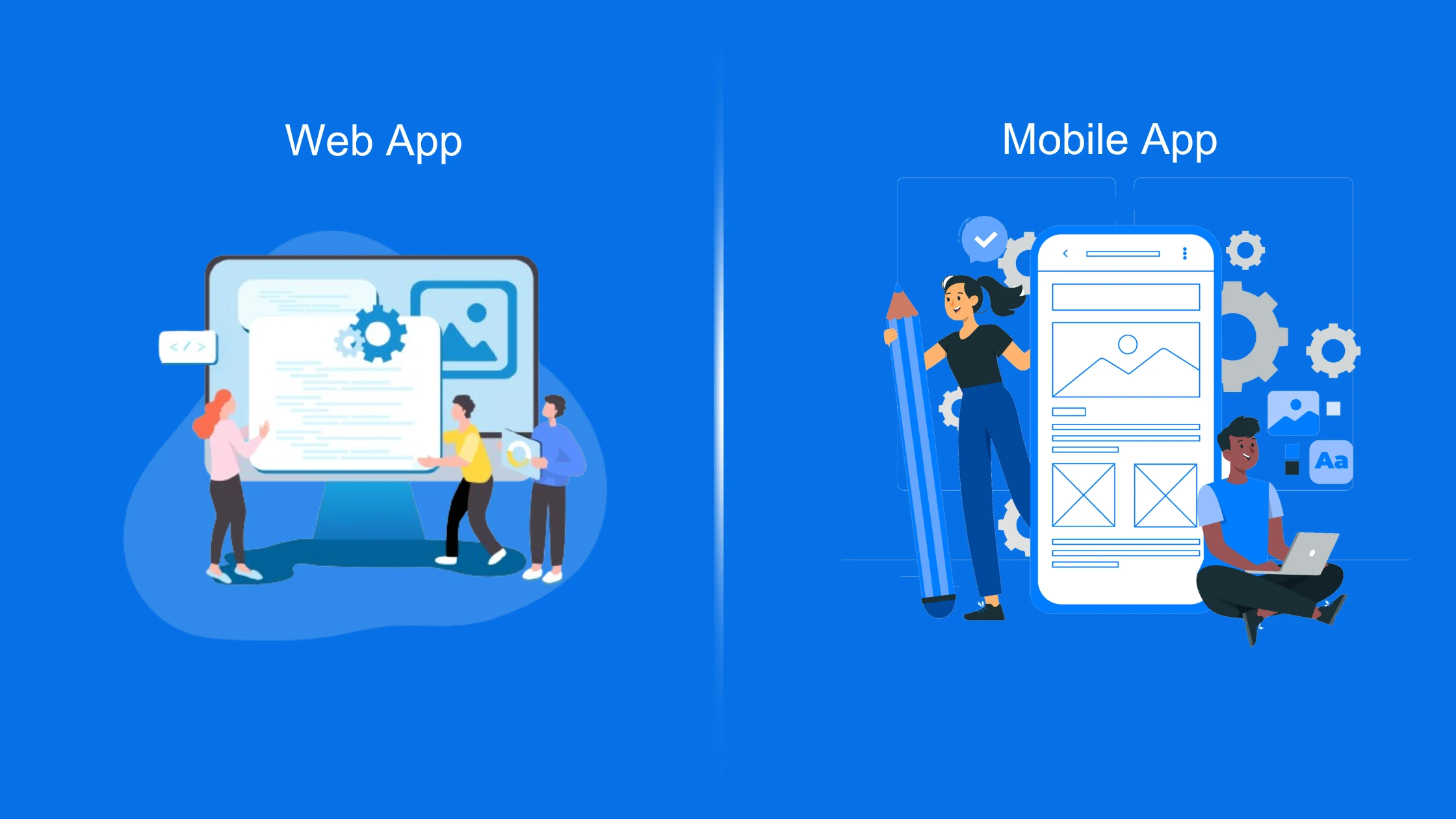
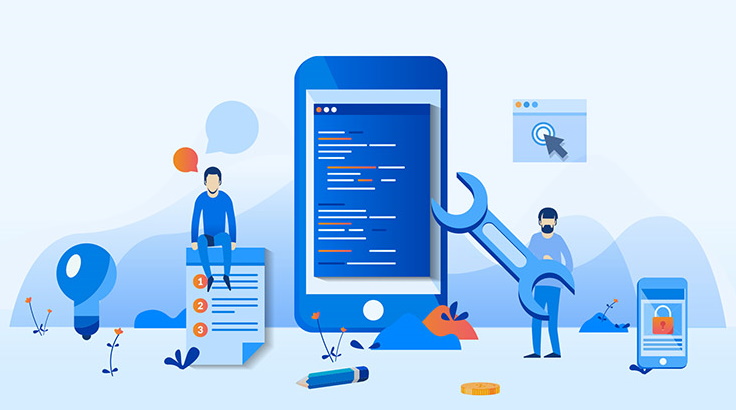
The demand for recruiting Mobile programmers is increasing, from technology enterprises to startups and digital service companies.
This is a high-income profession with international development opportunities and is always sought after in the mobile era.
Choosing a reputable programming unit helps businesses ensure product quality, progress and long-term support.
An experienced partner will provide secure, sustainable applications and accompany businesses in the digital development process.
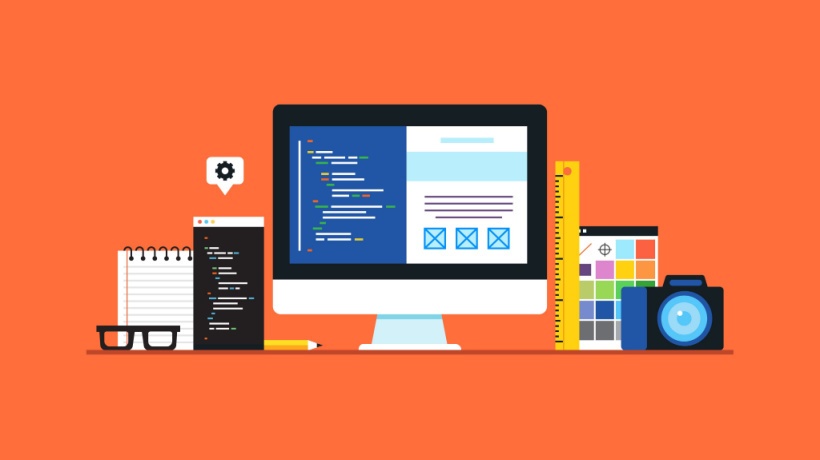
This section will provide a comprehensive overview of the mobile application programming industry, from basic definitions, why this field is so attractive, to classifying popular application types. Readers will have a solid foundation before diving into the technical aspects.
Mobile application programming, or mobile application development, is not simply writing code to run a program on a phone. It is a comprehensive process, an art that combines engineering and creativity to create digital products that solve problems for users. This process covers the entire lifecycle of an application, starting from the ideation stage, market research to identify needs and competitors, then designing the user interface (UI) and user experience (UX) to ensure the application is not only beautiful but also easy to use.
The core phase is development, where developers transform the design into a working product. This is followed by rigorous testing on a variety of devices, operating systems, and network conditions to find and fix bugs, ensuring stability and performance. Once completed, the application is deployed to major app stores such as the Google Play Store for Android and the Apple App Store for iOS. However, the work doesn’t stop there. The application lifecycle continues with a period of ongoing maintenance and updates to fix bugs, add new features, and be compatible with the latest operating system versions.
A successful app is the perfect blend of technical excellence, user-centric design, and a solid business strategy. It is not just a tool, but also a major communication channel, a commercial platform, and an entertainment medium that shapes modern culture and economy. Therefore, understanding mobile programming is understanding the engine that runs the digital economy and how we interact with the world every day.
The appeal of mobile programming is no coincidence. It is driven by the convergence of many economic, technological and social factors, creating a field full of opportunities and potential.
First, it is impossible not to mention the booming market. With billions of smartphone users worldwide and this number is still growing, the mobile application market is a huge "blue ocean". Each smartphone is a potential door for your product to reach users. Statistics on the number of application downloads and revenue from application stores are constantly breaking records, showing a huge market size and a demand that shows no signs of cooling down.
This boom directly leads to a very high demand for human resources. In the digital transformation era, having a presence on mobile platforms is no longer an option but has become a mandatory requirement for most businesses, from large corporations to small shops. They need applications for sales, customer care, internal operations and brand promotion. This creates a "thirst" for skilled mobile programmers, making the job market always vibrant and open.
Along with high demand comes attractive income. Compared to the average of many other professions, mobile programmers, especially those with experience and deep expertise, often have very competitive salaries. This is a career path that offers financial stability and the potential for significant income growth over time and skill.
In addition, mobile programming is also an endless space for creativity and entrepreneurship. The barriers to creating and releasing a product that can reach millions of users have been significantly reduced. With just a good idea and programming skills, an individual or a small group can build their own business. This is a fertile ground for entrepreneurial spirit, where creativity can be turned into products of practical value.
Finally, one of the most compelling factors is the direct and tangible impact. As a mobile developer, you have the opportunity to create products that people use every day, from booking a ride, ordering food, learning a foreign language to entertainment. The satisfaction of seeing your product solve a real problem, making someone’s life easier is a powerful motivator that not many professions have.
When entering the world of app development, it is important to understand the differences between different types of apps. Each type has its pros and cons and is suitable for different project goals. There are four main types to distinguish: Native App, Cross-Platform App, Hybrid App and Progressive Web App (PWA).
Native Apps are apps that are built specifically for a specific operating system. iOS apps are written in Swift or Objective-C, while Android apps are written in Kotlin or Java. Because they are “born” for a single platform, they can take full advantage of the hardware power and the operating system’s unique features, providing the highest performance and the smoothest, most natural user experience.
Cross-Platform Apps are the solution to the “write once, run anywhere” problem. Programmers only need to write a single source code using frameworks like Flutter or React Native, then can compile and deploy on both iOS and Android. This approach saves a lot of time, cost and development resources, making it a popular choice for startups and businesses that want to quickly bring their products to market.
Hybrid Apps are an older approach that uses standard web technologies (HTML5, CSS3, JavaScript) and wraps them in a native “container” (native webview). It is essentially a website “packaged” into an app. While easy to develop, Hybrid Apps are often inferior in performance and hardware accessibility compared to Native and Cross-Platform. Nowadays, the term is often replaced or lumped together with Cross-Platform due to the rapid development of modern frameworks.
Progressive Web Apps (PWA) are an evolution of the web. They are advanced web applications that can be “installed” to the home screen, work offline, and send push notifications like a real app, but are delivered directly through the web browser without going through an app store.
For ease of comparison, the table below summarizes the main features of the three most popular approaches:
| Criteria | Native App | Cross-Platform App | Progressive Web App (PWA) |
| Performance | Very high | Tall (almost Native) | Browser Dependent |
| Development costs | High | Medium | Short |
| Development speed | Slow | Fast | Very fast |
| API/Hardware Accessibility | Comprehensive | Almost comprehensive | Limit |
| Distribution channel | App Store | App Store | Web (URL) |
| User Experience (UX) | The best | Very good | Good |
Diving into the heart of mobile development, this section will analyze the core languages, frameworks, and technologies in detail. Readers will understand the pros and cons of each approach—from Native, Cross-Platform to Web App—and representative technologies such as React Native, Flutter, and even the new direction with Python, helping them make the right choice for their project or career path.
Native programming is the most traditional and powerful way to build mobile applications. This approach focuses on developing separate applications for each operating system, using the official programming languages and toolkits provided by the manufacturers (Apple and Google). Choosing Native development is not only a technical decision, but also a business strategy, often indicating a mature product where performance and user experience are competitive advantages that cannot be compromised.
For Apple’s iOS ecosystem, the current primary programming language is Swift. Introduced in 2014, Swift was designed to be more modern, safe, and readable than its predecessor, Objective-C. While Objective-C is still used for maintaining older projects, most new projects prefer Swift. For building interfaces, Apple provides two main frameworks: UIKit, a traditional, time-tested framework, and SwiftUI, a more modern framework that allows for building interfaces visually and with less code.
For Google's Android ecosystem, the official and recommended language is Kotlin. Similar to Swift, Kotlin brings many syntactic and safety improvements over Java, which has dominated the platform. Google has officially declared Kotlin as its preferred language for Android development. For the interface, developers can use the traditional XML-based layout system or opt for Jetpack Compose, a modern toolkit built entirely in Kotlin that helps build native interfaces quickly and efficiently.
When a company decides to invest in building two separate teams for Native development, it shows a long-term commitment to becoming a leader in their field. They are willing to pay a higher development cost in exchange for a superior user experience, because they believe it will lead to higher user retention and better market share.
Cross-Platform Programming was born as a solution to the problem of cost and time efficiency. Its core value lies in the slogan "write once, run anywhere". Instead of building and maintaining two separate source code bases for iOS and Android, developers only need to focus on a single set of code. This significantly reduces resources, increases speed to market, and simplifies maintenance. It is the top choice for startups and businesses that prioritize flexibility and budget efficiency.
However, this approach also has certain trade-offs. The “write once, debug everywhere” challenge is real, as bugs sometimes only appear on a specific platform. In addition, due to the abstraction layer, updates to support the latest operating system features may be delayed compared to Native applications. Performance in some heavy-duty cases may also not be as good as Native, although with modern frameworks, this gap is increasingly narrowing.
React Native, developed and backed by Meta (Facebook’s parent company), is one of the most popular cross-platform frameworks. Its biggest strength comes from its use of JavaScript and the React library, allowing web development teams to easily transition to mobile without having to learn a completely new language.
React Native's architecture is quite unique. It doesn't draw its own interface, but acts as a "bridge" to call and control the native UI components of each platform. This means that a button in a React Native app on iOS is a native UIButton, and on Android it is a native Button. This gives the app a very "natural" feel and appearance that is familiar to users of each operating system. React Native has a huge ecosystem of libraries, community support tools, and a "Fast Refresh" feature that helps developers see changes in the source code immediately without having to recompile the entire app, thereby significantly speeding up development.
Flutter is a cross-platform framework developed by Google that is growing in popularity. It is an ideal choice for teams that prioritize a beautiful, consistent user interface across all platforms and high performance. Flutter uses the Dart programming language, also developed by Google, which is optimized for building user interfaces.
The core difference between Flutter and React Native is its architecture. Instead of using native UI components, Flutter draws its entire interface itself using a powerful 2D graphics engine called Skia. This gives Flutter complete control over every pixel on the screen, allowing for complex custom interfaces, smooth animations, and ensuring that the app looks identical on both iOS and Android.
This architectural difference explains the strengths and weaknesses of each framework. Flutter's approach brings consistency and beauty to the interface, but can sometimes make demanding users feel that it is not completely "native". In contrast, React Native ensures a 100% native interface but depends on a communication "bridge", which can sometimes become a performance bottleneck. Flutter's "Hot Reload" feature is also extremely powerful, allowing the application interface to update in a split second, making the development and testing process extremely fast.
Many people, especially those familiar with Python, often ask whether it is possible to use this language to develop mobile applications. The answer is yes, but it is important to understand its role. Python is not a mainstream choice for building front-ends for commercial mobile applications. Although there are frameworks such as Kivy or BeeWare that allow this, they are still relatively young and niche.
However, the real value of Python in the mobile world lies in the backend (server) and its AI and Machine Learning features. Most complex applications require a server to store data, process business logic, and provide data to the application via an API. Python, with powerful frameworks like Django or Flask, is a great choice for building these backends.
For example, a photo editing app might have an interface written in Swift (for iOS), but the "object recognition" feature in the photo is provided by a machine learning model written in Python running on the server. The mobile app will send the photo to the server, the Python server will process it and return the result. This is the most potential and popular direction when it comes to "mobile app programming in Python".
Mobile web programming is a different approach, focusing not on creating apps that can be installed from the app store, but on creating the best web browser experience for mobile users. There are two main concepts in this field:
Responsive Web Design: This is a method of designing and developing a website so that its interface can automatically scale and rearrange appropriately to display well on all screen sizes, from large desktop computers to compact smartphones. This is a basic requirement for any modern website.
Progressive Web Apps (PWAs): As mentioned, this is an evolution of the web. By using modern browser technologies, PWAs provide an experience that is almost like a native app.
Users can add PWAs to their home screen, use them offline, and receive notifications. This is an extremely cost-effective solution for content-heavy websites, simple tools, or as a business’ first step before deciding to invest in building a full Native or Cross-Platform app.
This section serves as a detailed roadmap for those who want to pursue a career as a mobile developer. The content will outline a systematic learning path from scratch, list the indispensable hard and soft skills, and clearly describe the daily roles and responsibilities of a professional application developer.
Becoming a professional mobile developer requires a structured learning process and perseverance. Here is a 7-step roadmap designed to take beginners from the basics to building their first app.
Step 1: Build a solid programming foundation: Before diving into the mobile world, it is important to master core programming concepts. Start with a basic programming language like Python or JavaScript to understand variables, data types, loops, conditional statements, functions, and especially Object Oriented Programming (OOP). This foundation will make learning specialized languages much easier later on.
Step 2: Choose your specialization: Based on your goals and personal preferences, you need to decide which direction to go: Native iOS, Native Android, or Cross-Platform. If you want to focus on the Apple ecosystem and create the best experiences for iPhone/iPad, choose iOS. If you want to reach a larger user base, choose Android. If you want to be time-efficient and be able to develop for both platforms, consider Flutter or React Native.
Step 3: Learn a specialized language and framework: Once you have a direction, focus on learning the corresponding technology in depth. For example: Swift and SwiftUI for iOS; Kotlin and Jetpack Compose for Android; Dart and Flutter or JavaScript and React Native for Cross-Platform.
Step 4: Build a personal project (Portfolio): Theory will be meaningless without being applied in practice. This is the most important step. Start building small projects to consolidate your knowledge and create products to "show off" to employers. Some good ideas for beginners: note-taking application (To-do list), weather viewing application (using public weather API), simple news reading application.
Step 5: Master the essential tools: A professional programmer doesn't just know how to code. You need to master the supporting tools. Git is a must-know version control system for tracking source code changes and collaborating with teams. Xcode (for iOS) and Android Studio (for Android) are Integrated Development Environments (IDEs) that provide everything you need, from a code editor to a debugger.
Step 6: Understand APIs and networking: Most modern applications need to fetch data from the Internet. You need to learn how to work with RESTful APIs and handle data in JSON format, which is the most common way for mobile applications to communicate with servers.
Step 7: Learn the app publishing process: Finally, learn the basic steps to get your app on the Google Play Store and Apple App Store. This includes creating a developer account, preparing graphic assets (icons, screenshots), and following each app store's regulations.
To succeed in this industry, a programmer needs to be equipped with a diverse skill set, including both technical (hard) skills and personal (soft) skills.
Hard Skills:
Proficiency in the chosen language and framework: This is the most basic requirement. You must have a deep understanding of the syntax, standard libraries, and best programming practices of the technology you are pursuing.
Understanding mobile UI/UX design patterns: You don't need to be a designer, but you need to understand mobile-specific user experience and interface design principles to be able to translate designs into products accurately.
Working with APIs and data: The ability to call RESTful APIs, parse JSON data, and integrate with third-party services is critical.
Local database management: Many applications need to store data directly on the device. A solid understanding of technologies like SQLite, Realm, or CoreData is essential.
Testing and Debugging: The ability to effectively identify, analyze, and fix bugs is what separates an amateur from a professional programmer.
Soft Skills:
Problem Solving Mindset: The core of programming is problem solving. The ability to analyze a complex requirement, break it down into manageable parts, and find the optimal solution is the king skill.
Logical thinking and attention to detail: One misplaced semicolon can bring down the whole program. Carefulness and attention to detail are essential.
Communication and teamwork: Programmers rarely work alone. The ability to communicate clearly with other team members (project managers, designers, testers) and even non-technical people is extremely important.
Continuous learning: Mobile technology changes rapidly. A hot framework today may be obsolete next year. The ability and desire to learn new things is vital to career growth.
Another important factor that separates a good programmer from a great programmer is “product thinking”. A person with only “programming thinking” will only implement the assigned technical requirements. But a person with “product thinking” will always ask: “Why do users need this feature? What problem does it solve for them? Is there a better way to solve that problem?”.
This mindset helps them contribute to product development strategies, propose better solutions, and prioritize work based on real user impact, not just technical complexity. This creates superior value and is the leap from Junior to Senior.
The daily work of a mobile developer is very diverse and does not only revolve around writing code. They are an important link in the entire product development process.
Key responsibilities include:
Convert designs to code: Take UI/UX designs from the design team and turn them into working interfaces, ensuring accuracy and high quality.
Collaborate with other departments: Regularly work with product management to understand requirements, with backend developers to agree on APIs, and with QA to identify and fix bugs.
Write and maintain technical documentation: Document architectural decisions, user guides for source code components so other team members can understand and continue development.
Debugging and Troubleshooting: Investigate bugs reported from QA or end users, find root cause and provide effective patches.
Optimize app performance: Continuously monitor and improve app performance, including response speed, memory usage, and battery consumption to deliver the best user experience.
Updates and maintenance: Ensure the app is always compatible with the latest operating system versions and complies with changing policies from the Google Play Store and Apple App Store.
Provides a comprehensive overview of the mobile programming job market. Readers will grasp current recruitment trends, reference salaries for each experience level, popular job positions and the most effective job search channels, helping them confidently position themselves and develop their careers.
The recruitment market for mobile programmers in Vietnam and around the world is still in a strong development phase and shows no signs of slowing down. The demand for human resources is always high and stable, stemming from the fact that businesses in all fields are aware of the importance of being present on mobile platforms to reach and serve customers.
Some of the notable trends in the market today include a sharp increase in the demand for hiring Cross-Platform developers, especially Flutter and React Native. Companies, especially startups and small and medium-sized businesses, favor these technologies because of their ability to save costs and speed up project progress.
However, this does not mean that the demand for Native developers has decreased. On the contrary, large companies, products that require extremely high performance or need deep integration with hardware features (such as in the financial sector, gaming, multimedia processing) are always looking for experienced iOS (Swift) and Android (Kotlin) experts.
In addition, the development of the remote work model has also opened up more opportunities, allowing programmers in Vietnam to work for international companies with attractive compensation without having to travel.
Mobile programming offers a clear career path with increasing income based on experience and skills. Popular job positions include:
iOS Developer: Specializes in developing applications for Apple's iOS operating system.
Android Developer: Specializes in developing applications for Google's Android operating system.
React Native Developer: Specializes in developing cross-platform applications using React Native.
Flutter Developer: Specializes in developing cross-platform applications using Flutter.
Mobile QA/Tester: Quality testing specialist, ensures the application is stable and error-free.
Mobile Team Lead/Manager: Team leader, responsible for managing the team of programmers, technical direction and project progress.
Salary is one of the most attractive factors in the industry. Below is a reference salary table for mobile programmer positions in the Vietnamese market, classified by experience level:
| Level | Experience | Reference salary (VND/month) |
| Intern/Fresher | 0 - 1 year | 8,000,000 - 15,000,000 |
| Junior | 1 - 2 years | 15,000,000 - 25,000,000 |
| Mid-level | 2 - 4 years | 25,000,000 - 45,000,000 |
| Senior | 4+ years | 45,000,000 - 70,000,000+ |
| Lead/Architect | 6+ years | 70,000,000 - 100,000,000+ |
Note: The above salary is for reference only and may vary depending on the company, project size, professional skills and negotiation ability of the candidate.
To effectively search for job opportunities in the field of mobile programming, candidates should focus on reputable and specialized channels.
IT recruitment websites: These are the most concentrated and quality sources of information. In Vietnam, platforms such as TopDev and ITviec are the top choices, gathering thousands of recruitment posts from large and small technology companies.
Professional Social Network: LinkedIn is not only a place to build a personal profile but also an extremely powerful job search and networking tool. Many recruiters and HR professionals are active on this platform to find potential candidates.
Company Careers Website: If you have your "dream" companies in mind, regularly visit the "Recruitment" or "Careers" section of their official website. This is the most direct way to apply and demonstrate your interest.
Tech communities and events: Joining mobile programming groups on Facebook, meetups, and tech conferences is a great way to learn, stay up to date on trends, and expand your network. Sometimes the best job opportunities come from community conversations and referrals.
Expanding the reader’s horizons beyond the usual applications, this section explores the most challenging and specialized areas. From creating entertaining worlds in game programming, building complex solutions for businesses, to connecting things through IoT, readers will see the diversity and limitless potential of mobile programming.
Mobile game programming is a specialized and creative field that is significantly different from regular app development. While apps focus on providing utility and solving problems, games focus on creating entertaining, interactive, and engaging experiences for players.
To build games, programmers usually do not start from scratch but use powerful game engines (game development tools). The two most popular engines today are:
Unity: Using the C# programming language, Unity is the dominant choice in mobile games for both 2D and 3D. It is known for its excellent cross-platform capabilities, a huge developer community, and a rich Asset Store that helps developers speed up the game making process.
Unreal Engine: Using the C++ language and the Blueprints visual programming system, Unreal Engine is known for its ability to create high-end, realistic 3D graphics. It is often used for games with high and complex graphic requirements.
This field also comes with unique challenges that require a more specialized skill set, such as optimizing performance so that games run smoothly on a variety of hardware, managing graphics and audio resources, implementing in-game physics algorithms, and building effective monetization strategies (such as in-game purchases and advertising).
This is a field that focuses on building applications that are not intended for public consumption but for the internal operations of a business. These applications are designed to increase productivity, optimize processes, and improve work efficiency.
Some typical examples include:
Application for sales team to manage customer information, create orders and report sales right on the phone.
Application for field technicians to receive work schedules, look up technical documents and report work progress.
Internal communication, training and human resource management platforms.
When developing enterprise applications, the top priorities are completely different. Security is vital to protect sensitive company data. Integration with existing enterprise systems such as ERP (SAP), CRM (Salesforce) is a must. Finally, Scalability & Manageability, often through Mobile Device Management (MDM) solutions to control application installation and updates on employee devices.
The Internet of Things (IoT) is the network that connects physical devices to each other and to the internet. In this ecosystem, mobile apps play a central role: they are the “remote controller” and “dashboard” that allows users to interact with and manage smart devices.
This relationship is present everywhere:
Smart home application to control lights, air conditioners, security cameras.
Health app syncs data from smartwatch or fitness band.
The application allows locking/unlocking and tracking the location of smart cars.
The rise of IoT has created a new paradigm for mobile developers, shifting their focus from creating purely digital experiences on the screen to orchestrating interactions between the digital and physical worlds. This requires new skills that go beyond traditional application development. IoT developers need to be good at not only UI/UX, but also understand hardware communication protocols such as Bluetooth Low Energy (BLE), Wi-Fi, NFC, and messaging protocols such as MQTT.
They are no longer just interface programmers, but systems integration engineers. Their success depends on creating a seamless, reliable, and secure bridge between a user’s touch on the screen and a physical action happening in the real world. This is a specialized, challenging, but also extremely valuable and potential field.